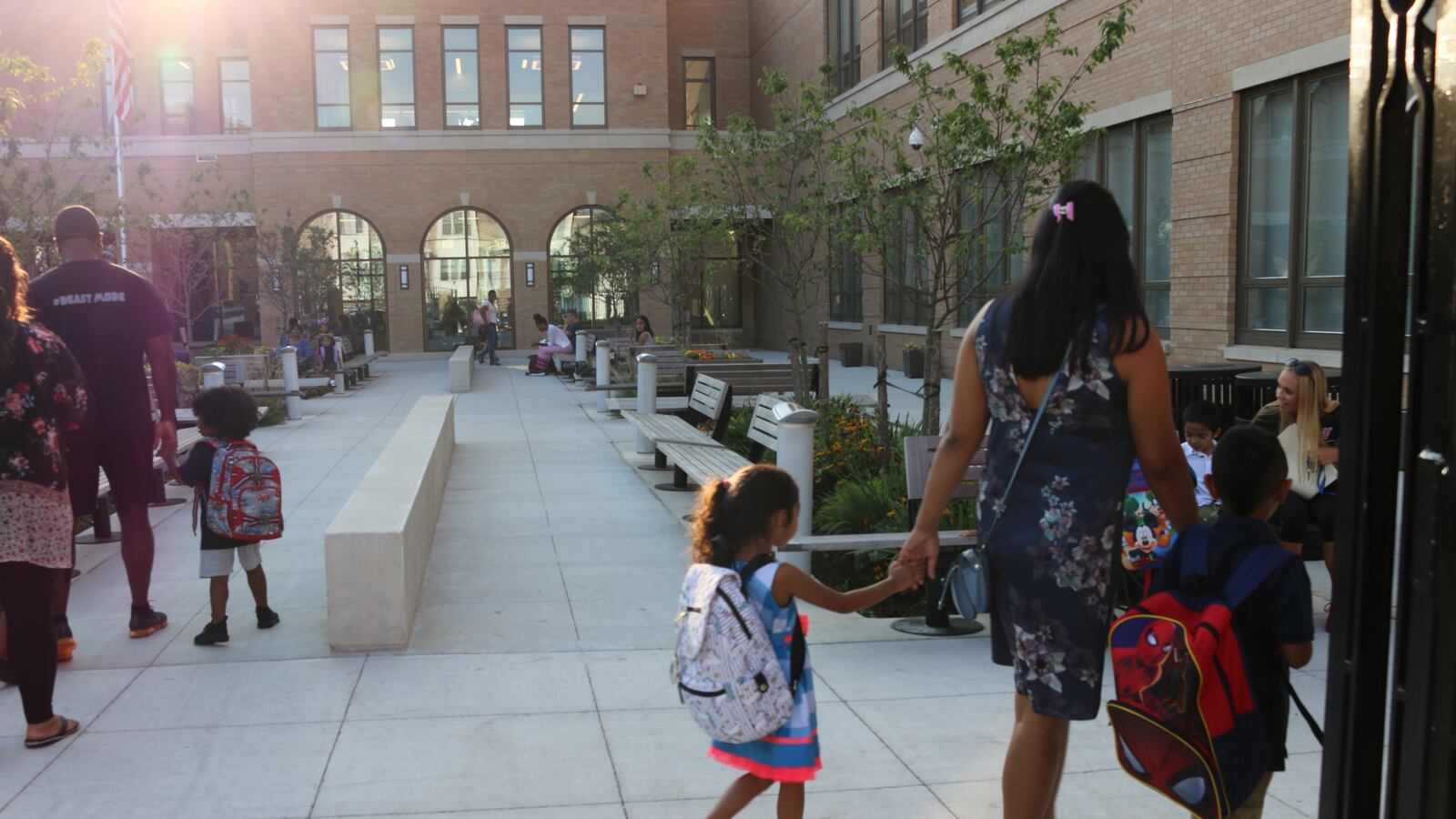New York spends more money per student than any other state in the country, but those dollars are not distributed proportionately to the highest-need schools, according to a new analysis released Monday.
In New York City, schools with the greatest share of low-income students do receive slightly more funding. But according to Education Trust-New York, an advocacy organization that conducted the analysis, the funding difference is still not equitable given the size of the gaps between schools with the highest and lowest levels of students growing up in poverty. This discrepancy is potentially critical, as research has found that increased school spending can lead to a noticeable uptick in student learning.
City elementary and middle schools that serve a large share of students from low-income families receive 15 percent more funding on average than schools with fewer economically disadvantaged students do. Needy high schools receive 22 percent more funding.
And in other large school districts in the state, the funding differentials are narrow to non-existent. High-need elementary and middle schools in Buffalo, for example, receive only 4 percent more funding than low-need schools do, and in Yonkers, needy schools actually received slightly less funding than those with a lower share of the city’s low-income students. (The report includes an interactive database that shows how most city schools are funded.)

In New York City, the neediest 25 percent of elementary and middle schools serve a student population where 96 percent of students come from low-income families on average. At the lowest-need schools, by contrast, 45 percent of students are low-income. That means despite having more than twice as many low-income students, highest-need schools receive just 15 percent more funding, according to the analysis.
“There should be significantly more funding in those highest-need schools based on that differential,” said Ian Rosenblum, Education Trust-New York’s executive director. The analysis does not spell out how much more money needy schools should receive; Rosenblum said the goal is to spark discussions in local communities about that question.
The findings are based on new data released last month under a new state law that requires certain districts to reveal details about how much money each of their schools spends per student and the broad strokes of how this money is allocated. (Seventy-six out of 733 districts statewide provided the information that is the basis of this analysis.)
Gov. Andrew Cuomo made the prompt disclosure of that data a priority during the last budget cycle (even though it would have been disclosed eventually under federal law). At a press conference in March, he said, “We have an education inequality problem in this state.”
New York City distributes some of its school funding through a formula that is designed to give more financial support to schools with greater shares of students with disabilities, who are English learners, or who are struggling academically. But despite some efforts to infuse schools with more resources, the formula has not been fully implemented.
The analysis also found that high-need schools tend to have less experienced teachers. At city schools with the lowest levels of poverty, 15 percent of teachers have less than three years of experience. That number jumps to 23 percent at high-poverty elementary and middle schools and to 26 percent at needy high schools.
A department spokesman, Doug Cohen, said that the analysis assumes the costs associated with programs such as additional literacy coaches or extra social services are evenly distributed across all schools when they are actually targeted at needy schools. And he said the analysis leaves out $600 million in federal Title I money, which is targeted at low-income schools.
However, Cohen also noted that the city is owed $1.2 billion for education by the state, money that could go toward fully funding the formula, which is designed to provide extra financial supports for the neediest schools.
“The data shows that we spend more money at high-needs schools,” Cohen said in a statement. “We’ll continue to invest in students and schools that need it the most, and make funding decisions through an equity lens.”
If you’re curious about how your school stacks up, check out the interactive database that shows how much funding each school receives, how each spends its money, how needy it is, how much experience teachers have, and more.
This story has been updated with an additional response from the city’s education department.

